We’ve all been there—you spend hours whipping up a home-cooked meal, only to sit down and think… “Why does this taste kinda flat?” It’s honestly the worst, especially when you’ve put in so much effort. Trust me, I’ve been right in that spot, staring down a sad plate of curry chicken wondering where it all went wrong (flashback to family Christmas dinner in 2011).
It’s frustrating when you want to make food taste better at home but you end up with something bland or just “meh.” You might think you need fancy tools or culinary school magic, but honestly? Most of the time, it’s a few small techniques—seasoning earlier, using fresh ingredients, and balancing flavors better—that make the biggest difference. I’ve spent years cooking for my family (and messing up a lot along the way!) and I’m here to spill all the tea.
Today, I’m sharing my best cooking tips for tasty meals with real-deal advice that actually works. From home cooking flavor tips to simple ways to make food delicious, consider this your go-to guide to finally nailing that “Wow, YOU made this?” moment at the dinner table. Let’s dive in!
1. Understand the Five Essential Flavors
You know how some dishes just pop with flavor? That’s because they hit the five core tastes: sweet, salty, sour, bitter, and umami. Get these in balance, and you’re halfway to a great meal.
Balancing flavors is like tuning a guitar—each note has to work together. For example, I like adding dash of sugar to tame a too-tangy tomato sauce. A sprinkle of salt can lift a flat soup. Umami? That’s the savory magic in things like mushrooms or soy sauce. Here’s how to nail it:
- Sweet: Think honey, sugar, or even carrots to soften sharp flavors.
- Salty: Use salt consistently, everything requires salt—sea salt’s my go-to.
- Sour: Lemon juice or vinegar adds brightness.
- Bitter: Greens like kale or grapefruit can add depth, but don’t overdo it.
- Umami: Toss in parmesan, soy saucce, or a splash of fish sauce.
Try tasting your dish as you cook and ask, Which of the five tastes are missing? It’s a game-changer for tuning flavors for different dishes.
2. Season Early, Season Often
Seasoning is where the magic happens, but it’s not just about dumping salt at the end. I used to think one pinch was enough—big mistake. Seasoning in layers builds flavor from the ground up. When I sauté onions with a pinch of salt, my dishes go from bland to whoa.
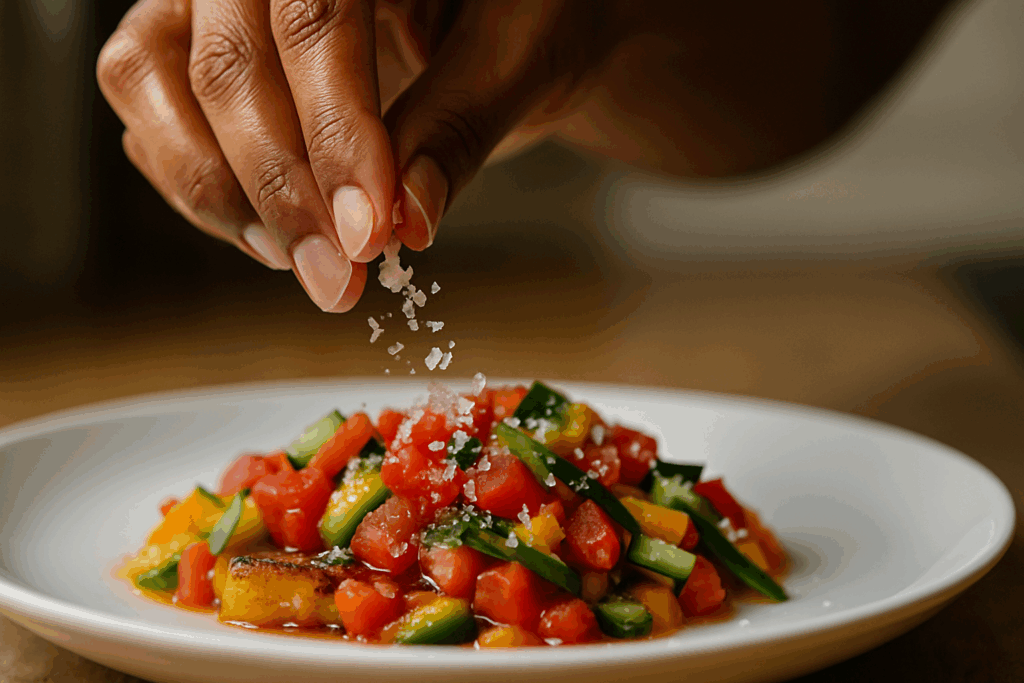
Here’s the deal:
- Start early: Add salt and spices when you sauté veggies or brown meat. It locks in flavor.
- Season in layers: Start when you first sauté your onions, then again when you add broth, and once more before serving.
- Adjust salt and spices during cooking: It’s like building a house—you wouldn’t decorate before the walls are up.
- Common seasoning mistake: Only seasoning the surface or forgetting to adjust for taste changes as the food cooks.
3. Buy Fresh Ingredients
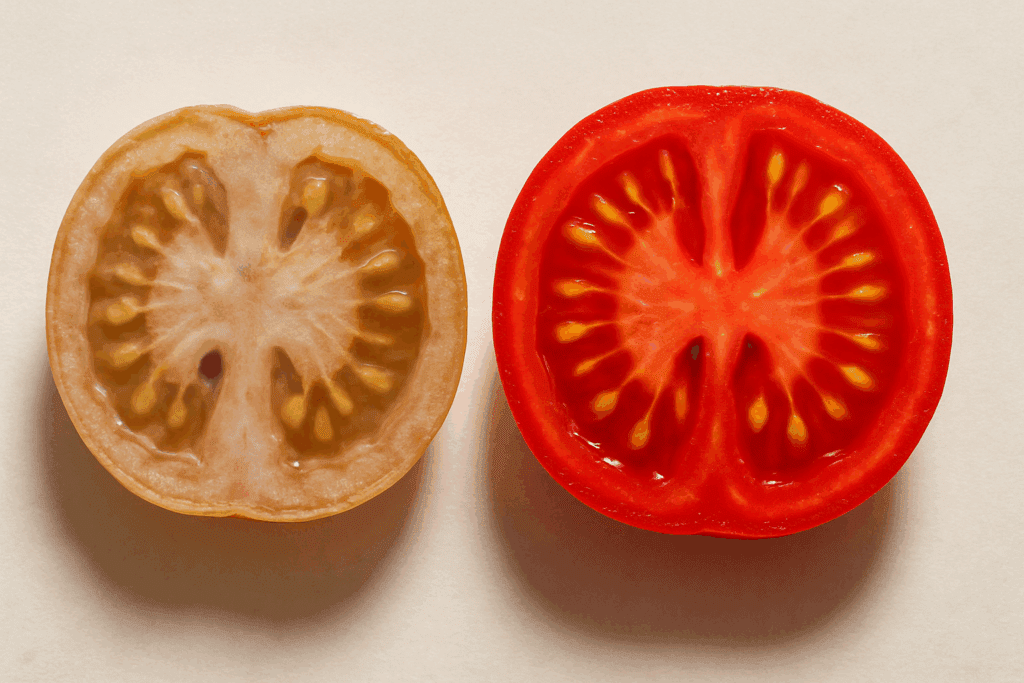
Old vs Fresh Tomato
Fresh really does mean flavorful. Here’s how to shop fresh:
- Pick vibrant produce: Look for bright colors and firm textures. Limp broccoli? Pass Not worth it.
- Fresh instead of Frozen: Fresh chicken or beef has a richer taste than frozen stuff that’s been sitting forever.
- Go local when you can: Local markets often have the best tomatoes or greens as they tend to be fresh off the vine. I swear my salads taste better with local lettuce.
Fresh doesn’t always mean expensive. Adding a fresh herb, like basil, can elevate a simple pasta.
4. Elevate with Acids
Acids are your secret weapon for bright, balanced flavors. Think of when you squeeze lemon over a heavy cream sauce—suddenly, it becomes alive. Lemon, vinegar, or even yogurt can cut through richness and make dishes sing.
Try these:
- Lemon juice: Perfect for fish, veggies, or soups.
- Vinegar: A splash of balsamic or apple cider vinegar works wonders in stews.
- Yogurt: I love to swirl it into curries for a tangy, creamy kick (one of my faves)
Just don’t go overboard—too much acid can make your dish taste like a pickle. A teaspoon or two is usually enough.
5. Master Heat Control
Heat is a flavor maker or breaker. I’m sure I’m not the only one with burnt rice bottom in the pot, so we all can share that learning experience.
Low and slow cooking, like simmering a soup, pulls out deep, cozy flavors.
- Low and slow: Braises or roasts love gentle heat for tender, flavorful results cooking over long hours. Simmering a soup pulls out deep, cozy flavors.
- High heat: Use it for quick chars, caramelization or crispy edges, but watch closely. Works great like when searing a steak, gives that crave-worthy crust, or sautéing vegetables.
- Avoid burns: Keep an eye on garlic, spices, or delicate ingredients—they turn bitter fast.
Practice toggling your stove’s heat. It’s like driving a car—you gotta know when to speed up or slow down.
6. Boost Flavor with Homemade Stocks and Broths

Homemade stock is like liquid gold. Stocks shine in risottos, gravies, stews, soups, or even as a base for cooking rice. I started making my own stock because I have developed stomach issues, and the stock just makes my tummy settle. A simple chicken stock has changed my soups forever.
Here’s an easy recipe:
- Toss chicken bones, onion, carrot, celery, and a bay leaf in a pot.
- Cover with water and simmer for 4+ hours.
- Strain and store in the fridge or freezer.
I tend to avoid using store bought stock because I haven’t found a good one to this date! So instead, I make large batches and freeze them.
7. Add Aromatics Early
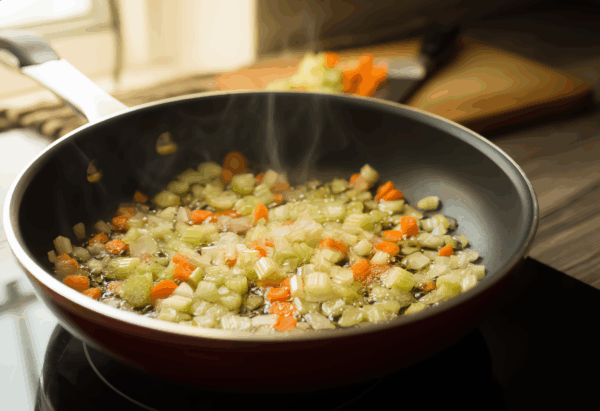
Aromatics like onions, garlic, and ginger are flavor superheroes. I learned this when I skipped sautéing onions for a curry—big mistake. The dish was flat. Sautéing aromatics early builds a flavor foundation.
Try this:
- Onions: Cook until soft and golden for sweetness.
- Garlic: Add it later to avoid burning—it gets bitter fast.
- Ginger: Grate it fresh for a zesty kick.
- Celery: Adds a subtle, earthy flavor that I love using in stews, soups and I LOVE JUICING CELERY!
- Bell Peppers: Add sweet and slightly tangy flavor
- Herbs: Although I prefer adding at the end, some dishes that don’t require searing will benefit from fresh herbs
Layer aromatics throughout cooking for extra depth, like adding fresh herbs at the end.
8. Play with Textures
Texture is the unsung hero of delicious food. Even the most flavorful dish can fall flat if everything is the same consistency. For example, my kids will rapidly eat veggie noodles (vegetables run through the spiralizer) but would struggle to eat a sliced cucumber. Just by changing the texture, they have a better experience.
Ideas to try:
- Crispy: Top soups with croutons or toasted nuts. Add fresh crunchy carrots to soup right before serving.
- Creamy: Swirl in sour cream or avocado for silkiness.
- Chewy: Add grains like farro or barley to salads.
Contrast is key. Something crispy with something smooth. Something tender with something chewy. Contrast is key. Something crispy with something smooth. Something tender with something chewy. These contrasts make eating more interesting and satisfying.
9. Don’t Forget Finishing Touches
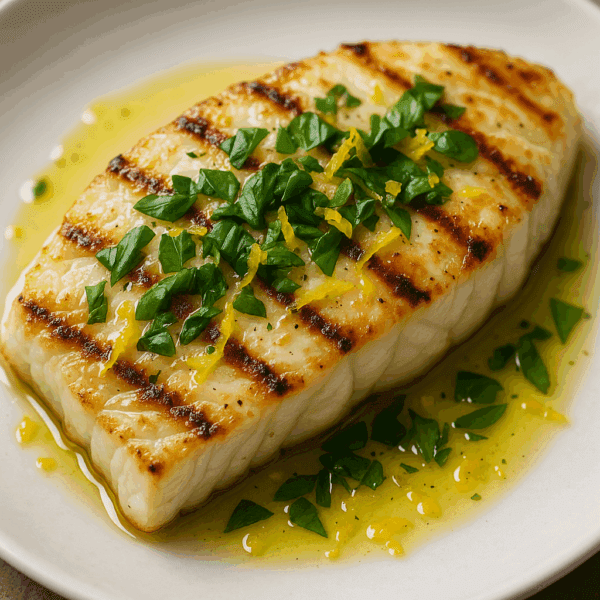
Some of my most spectacular cooking “wins” have come from last-minute additions that took all of 30 seconds. Finishing touches aren’t just garnish – they’re the difference between good and memorable food.
Fresh herbs added right before serving bring bright, lively flavor that would disappear with long cooking. A drizzle of your best olive oil adds richness and mouthfeel. Lemon zest provides an aromatic burst without acidity.
Easy finishing touches:
- Herbs: Chopped basil, cilantro, or escallions add freshness.
- Zest: Lemon or orange zest brightens everything.
- Oil: A tiny drizzle of good olive oil adds richness.
- Salt: A tiny sprinkle of flaky sea salt right before serving adds periodic bursts of salinity and a subtle crunch that makes flavors pop.
These little additions make your food feel special, even on a Tuesday night.
10. Experiment with Spice Blends
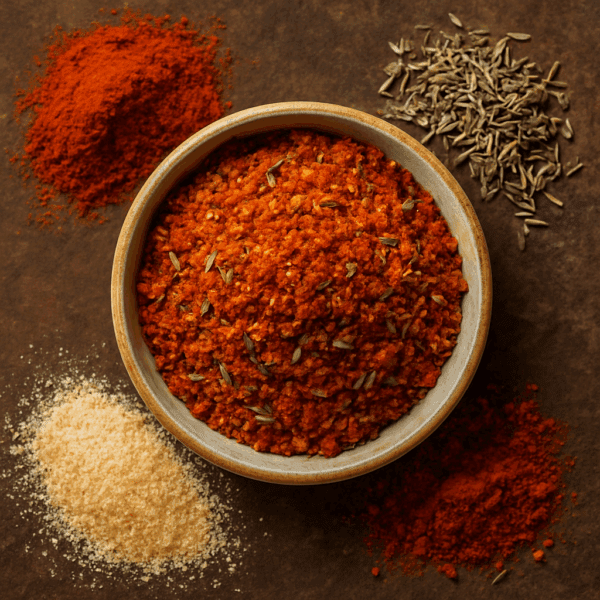
Spice blends are like flavor shortcuts. Curry powders are such a personal thing because no batch is the same, so there are some I prefer. Cajun seasoning, or Italian blends can transform a dish.
The key is understanding the character of different blends and where they shine. Za’atar is magical on roasted vegetables. Garam masala adds warmth to lentil dishes. Herbs de Provence transforms a simple roast chicken.
Beginners often make the mistake of adding too much, too late. Add your spices early enough to “bloom” in hot oil or fat, which releases their essential oils and deepens their flavor. And remember – you can always add more, but you can’t take it away!
Here’s how to play:
- Start small: A teaspoon of spice blend goes a long way.
- Make your own: Mix paprika, garlic powder, and thyme for a custom blend.
- Avoid over-spicing: Taste as you go to keep things balanced.
11. Marinate and Brine Like a Pro
Marinades and brines are among my favorite kitchen techniques because they work while I’m doing something else. Did you know that marinating very tough beef (such as what we have in Jamaica) in yogurt can save the cut and make it usable? I don’t know of any Jamaica who actually cooks without marinating first – it’s like an unspoken rule to making food.
Simple brine:
- Mix 1/4 cup salt with 4 cups water.
- Soak chicken for 30 minutes to 2 hours.
- Rinse and cook as usual.
Marinades work great for veggies too—just olive oil, lemon, and herbs can do wonders.
12. Incorporate Umami Boosters
Umami is that savory, “mmm” flavor, for eample, mushrooms to a pasta sauce—suddenly, it was next-level. Soy sauce, tomatoes, or parmesan are easy umami hacks. Even a small amount of these can transform a dish from flat to fabulous.
For vegetarian dishes that need depth, I rely heavily on mushrooms (especially dried ones), tomato paste, and nutritional yeast. For non-vegetarian cooking, a splash of fish sauce in non-Asian dishes is my secret weapon – it adds incredible depth without making things taste fishy.
Try these:
- Soy sauce: A splash in stir-fries or soups.
- Tomatoes: Roast them for concentrated flavor or try tomate paste
- Mushrooms: Sautéed or dried, they’re umami bombs.
- MSG: Do you hate it? Have you heard lots of propaganda that it’s bad and causes cancer? Well, MSG is an indelible part of the Chinese cuisine for centuries! Even a pinch of MSG (yep, it’s safe!) can boost flavor without overpowering.
Umami shines in soups, stews, sauces, and braised dishes.
13. Make Use of Infused Oils and Butters
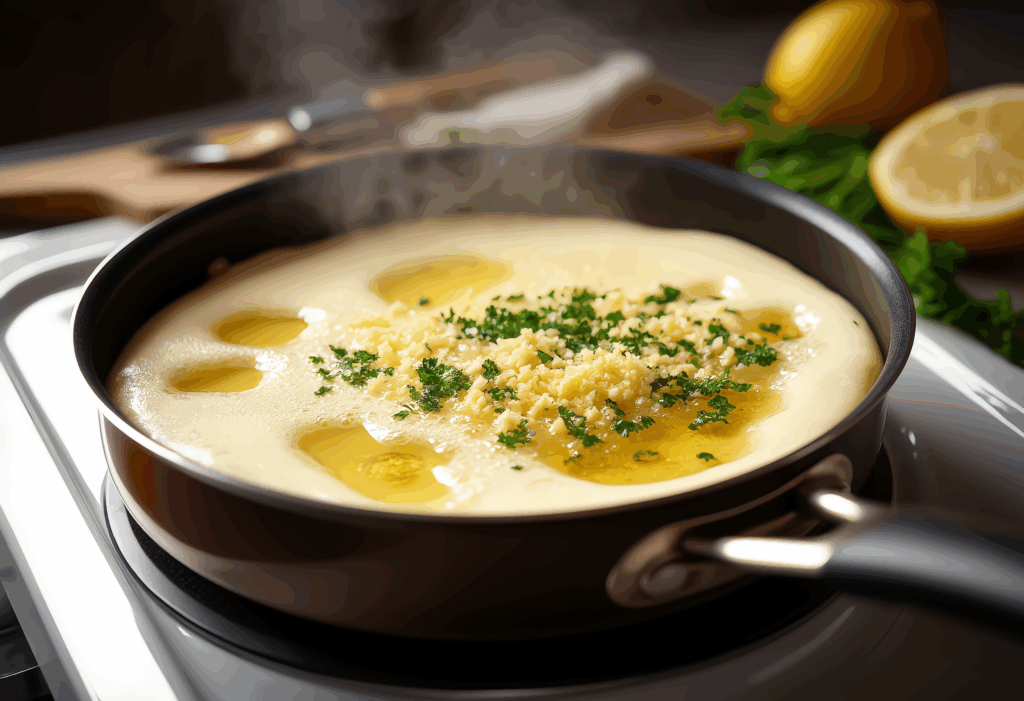
Okay here’s probably my favorite tip! Infused oils and butters add a fancy touch without much effort. For oils, simply heat good-quality oil with aromatics like garlic, herbs, or chiles, then let it cool and strain. My garlic-rosemary oil takes about 15 minutes to make and transforms everything from roasted vegetables to bread dipping.
There are some oils you can purchase with flavors infused in them, like my favorite garlic infused coconut oil.
You can make your own flavored oils very easily
- Scotch bonnet
- Garlic
- Ginger
- Thyme
Compound butters are even easier – just mix softened butter with flavoring ingredients like herbs, citrus zest, spices, or even roasted garlic. Form into a log, chill, and slice as needed. A pat of herb butter melting over a steak or fish creates an instant sauce that’s both elegant and effortless.
Easy garlic butter:
- Melt 1/2 cup butter with 2 minced garlic cloves.
- Let cool and store in the fridge.
- Spread on bread or toss with veggies.
Infused oils, like chili or herb, are great for drizzling. Just store them safely in the fridge to avoid spoilage.
People with IBS can leverage the flavor of garlic infused oil, without running the risk of irritating your digestive tract.
14. Taste and Adjust Constantly
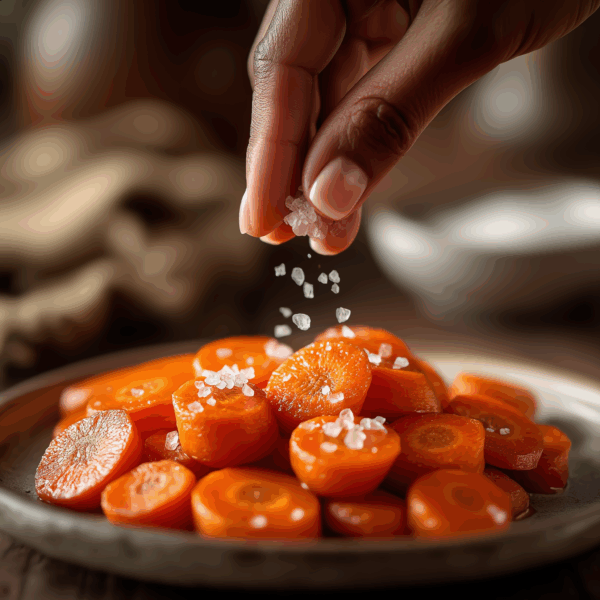
Chefs taste their food constantly, and so should you. Let me be honest with you – I never follow recipes exactly as written! As a recipe writer, I don’t even follow my own recipe, not because they’re bad, but because they’re designed to be easy replicated, which means it’s safe. But here’s a real scientific reason – the same food grown in different countries will taste different, so the proportions won’t always work based on the intensity of the flavor profile. Even altitude can affect cooking process. So you need to be vigilant and nimble on your feed to taste and adjust.
Okay, I’m holding back from going on a rant here – bottom line, tasting as you go lets you fix issues before it’s too late, and also lets you see what you’d like more of. As you develop your skill and palate, you will become more sensitive to what’s necessary over time.
How to do it:
- Taste early: Check flavors after each major step.
- Adjust gradually: Add salt, acid, or spice in small amounts.
Common fixes: Too salty? Add acid or sweetness to balance it. Too acidic? A touch of honey or sugar can round it out. Too spicy? Fat (like cream or butter) can tame the heat.
It’s like editing a story—keep tweaking until it’s just right.
15. Reduce Sauces to Concentrate Flavor
Reducing sauces sounds fancy, but it’s just simmering until they thicken. The difference between a thin, watery sauce and a rich one is often just time and patience – it comes down to TEXTURE in my opinion. I used to rush this step by adding cornstarch but nowadays, I just crank up the heak. I’m a speed queen, what can I say lol.
Here’s how:
- After cooking meat, deglaze the pan with wine or broth.
- Simmer until the liquid thickens and intensifies.
- Swirl in a pat of butter for richness.
Common mistakes include reducing too rapidly (which can lead to a bitter taste) or not reducing enough (resulting in diluted flavor). Also, remember that salt concentrates as liquid reduces, so go easy on salting until near the end.
16. Toast Nuts, Seeds, and Spices
Toasting unlocks huge flavor. I started toasting cumin seeds for tacos, and my family thought I’d gone gourmet. Heat awakens the essential oils in spices and the natural fats in nuts and seeds, creating more complex flavors and aromas. Nuts, seeds, or spices all benefit from a quick toast.
Try this:
- Nuts: Toast almonds in a dry pan until golden.
- Seeds: Sesame or pumpkin seeds add crunch.
- Spices: Toast cumin or coriander for deeper flavor.
- Butter: My favorite use of butter these days.
Watch closely—they burn fast but it’s easy to do: For nuts and seeds, use a dry skillet over medium heat, shaking frequently until you smell their fragrance (about 3-5 minutes). For spices, use low heat and shake constantly for just 30-60 seconds – they burn quickly!
Add toasted elements everywhere: Sprinkle toasted seeds over salads or roasted vegetables. Finish a curry with toasted coconut. Add toasted nuts to pasta or grain dishes. The textural crunch and flavor boost are worth the extra few minutes.
17. Cook with Wine, Beer, Rum, or Broth
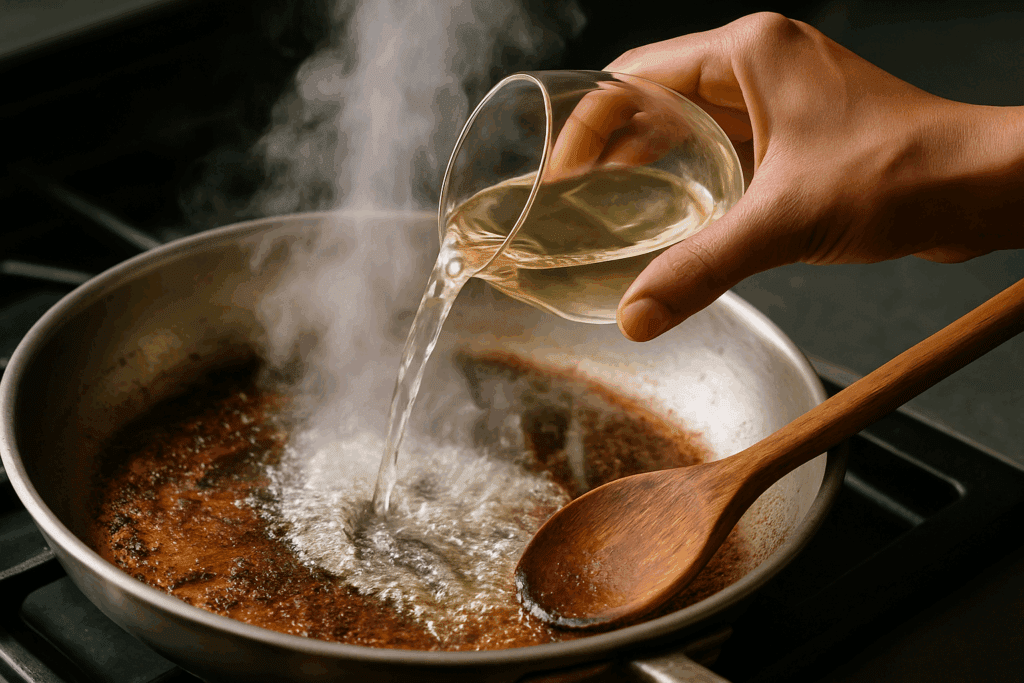
Cooking with wine or broth adds depth you can’t get otherwise. I made a beef stew with red wine once, and it was like a hug in a bowl. Beer works great for braises too, but also when spraying on meat on the grill.
Tips:
- Wine: Use a dry red or white you’d drink.
- Beer: Lagers or stouts add richness.
- Broth: A splash enhances any savory dish.
- Rum: Curry with a splash of rum just hits different.
Cook off the alcohol by simmering for a few minutes. No wine? Broth or even water with a splash of vinegar works.
Don’t drink alcohol? No problem! Substitutes work beautifully. For red wine, try pomegranate juice with a splash of vinegar. For white wine, apple juice with a touch of lemon often works. And good broth can replace either in most recipes.
18. Layer Flavors Thoughtfully
Layering flavors is the culmination of many techniques we’ve discussed. It means adding different flavors at different stages of cooking to create depth and complexity. Layering means adding ingredients at the right time.
Think about it like painting – you start with broad base colors, then add detail, and finally highlights. In cooking, you might begin with sautéed aromatics (onions, garlic), add body with vegetables and protein, build complexity with spices and herbs, and finish with bright accents like fresh herbs or a squeeze of lemon.
Soups and stews showcase layering beautifully. My vegetable soup starts with sautéed mirepoix (carrots, celery, onion), builds with broth and heartier vegetables, gains complexity from herbs added during simmering, and finishes with a splash of vinegar and fresh parsley at the end. Each layer serves a purpose.
Example for soup:
- Sauté onions and garlic for a base.
- Add spices and toast briefly.
- Simmer with broth and veggies, then finish with herbs.
The mistake many home cooks make is adding everything at once. Next time you cook, try to identify what each ingredient brings to the party and when it should make its entrance. This mindset shift transforms cooking from following instructions to creating something truly your own.
19. Presentation Matters Too!
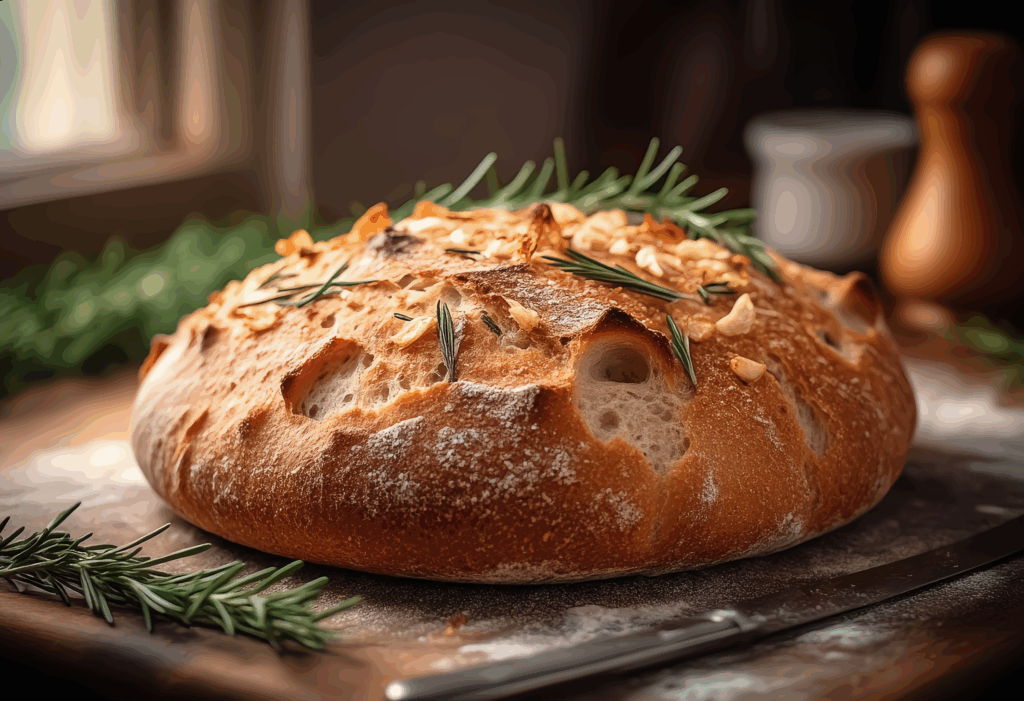
I used to think presentation was just fussy restaurant business until I realized how much it affects our perception of taste. Ask your kids if you don’t believe. For example – instead of taking bare cucumbers, I run them through the spiralizer and dress them up and my kids love it. We call them veggie noodles! Presentation tricks the brain into thinking food is tastier, but it can also alter the texture.
Easy ideas:
- Color: Use bright veggies or garnishes like parsley.
- Plating: Stack or fan ingredients for drama.
- Garnishes: A sprinkle of herbs or seeds adds flair.
- Contrast: Color contrast makes food more appealing.
You don’t need fancy equipment – just clean plates and a bit of intention. Try serving family-style on a nice board, or plating individually with a simple garnish. Stack foods instead of spreading them flat. Use a paper towel to wipe plate edges clean.
20. Keep Practicing and Stay Creative
Flavor intuition comes with practice. I’ve had plenty of kitchen disasters, but I’ve also saved many a meal because of my practice and ability to be creative on the spot. Here’s what I believe: becoming a better cook is a journey, not a destination. Even though I’m a professional, I still push myself to grow in many ways, try new cookbooks, watch new shows, and more.
Keep at it:
- Try one new thing at a time: Experiment with a new spice or technique I’ve mentioned above, for one week at a time.
- Learn from flops: Burnt sauce? Next time, lower the heat.
- Stay curious: Watch cooking shows or flip through a cookbook for inspo.
The more you cook, the better you’ll get at making food taste amazing.
Conclusion
Making food tasty at home isn’t about being a pro chef—it’s about small, smart moves that add big flavor. From seasoning early to adding a final drizzle of oil, these 20 tips can turn your meals into something special. I’ve shared my own kitchen wins and faceplants because I know how it feels to want to feed your family well without losing your mind. So, grab a lemon, toast some spices, and start experimenting. What’s one flavor trick you’re excited to try? Let’s keep the kitchen fun, mamas!

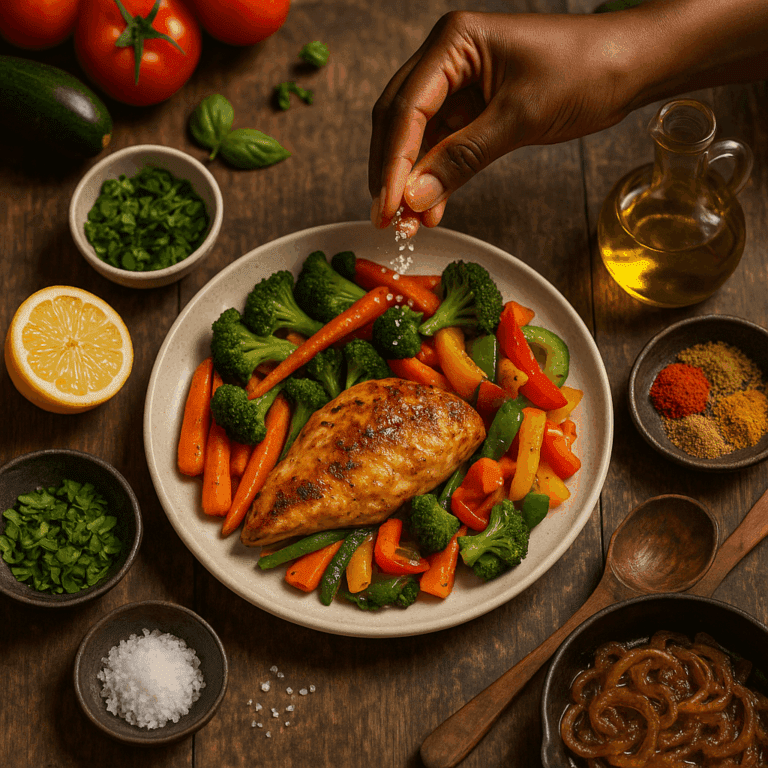



Leave a Reply